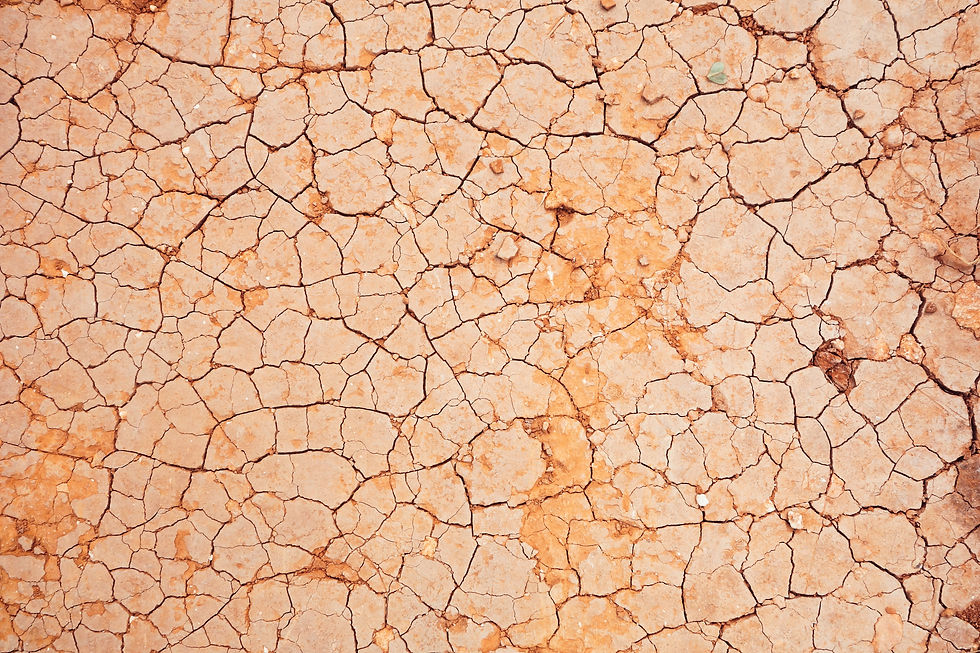Studying phosphate-starved plants to improve crops
- brittneyborowiec
- Aug 12, 2021
- 3 min read
By Lee-Marie Raytek, Queen's University

Phosphate is an essential nutrient that no living organism can live without. This is because it is a component of many important molecules including DNA and proteins. Animals consume enough phosphate through their diet, but plants have a hard time getting enough through the soil.
Modern farming’s “solution” to this is to apply tonnes of fertilizers to crops, resulting in “lazy” plants that are far worse at taking up phosphate. The phosphate that doesn’t get taken up leaks through the soil into nearby water systems causing intense harmful algal blooms and death of aquatic life. To make matters worse, we are rapidly running out of our precious, non-renewable phosphate resources. This has been termed the “Phosphate crisis,” and projections estimate that our resources could disappear by the end of this century. A new study on how plant metabolism is affected by changes in phosphate levels could help to develop crops that thrive at lower phosphate levels, eliminating the need to overuse damaging fertilizers.
The researchers focused on a specific type of protein modification known as phosphorylation, in which a phosphate is reversibly attached and detached from a protein. Phosphorylation has many functions in plants: it can turn proteins on or off, or make them change position within the cell. This is crucial for controlling metabolism and normal functioning, and abnormal phosphorylation can lead to diseases and disorders, such as cancer.
One of the major findings so far is that the protein that undergoes the most drastic phosphorylation in response to refeeding phosphate to phosphate-starved plant cells is an enzyme known as glutamate decarboxylase (GAD).
GAD exists in most organisms and is important for making GABA. While GABA is a major neurotransmitter in animals, its function in plants is unclear. The thought is that GABA has a critical function during times of stress which will typically cause a spike in GABA levels. Recently there has been evidence suggesting that GABA acts as a signal to tell the plant that it’s under stress (like nutrient deficiency). This would trigger a cellular response allowing the plant to survive better under that stressful condition.
If GABA is so important, GAD must be equally so – after all, it’s the player involved in producing GABA. So how does phosphorylation impact GAD? The team is currently working to tease apart the role of this modification on such a vital enzyme of plant metabolism.
One hypothesis is that in the phosphate-starved plant, dephosphorylated GAD is much more active allowing GABA levels to accumulate. In the same vein, refeeding the plant with phosphate drives phosphorylation of GAD, turning it “off.” If this is true, crops could be bioengineered to control how phosphorylated, and therefore how active, GAD is. Crops possessing mostly dephosphorylated forms of GAD would see higher GABA levels than normal, which could enhance the plant’s ability to tolerate low phosphate in the soil. The caveat with this is that too much GABA could have a detrimental effect on the plant during growth - a “GABA sweet spot” would need to be established. Alternatively, scientists could bioengineer a plant that triggers widespread GAD dephosphorylation only after its growth and development stage.
The group also offers a second hypothesis: phosphorylation may be connected to the location of GAD within the cell, rather than its on/off status. This is the case for the human GAD enzyme, which could point to a necessary purpose of GAD phosphorylation throughout evolution. If phosphorylation of plant GAD controls where GAD is in the cell, scientists could hijack this system for use in crops. By dictating where GAD positions itself, we can increase GABA levels at specific areas in a cell. This would increase the efficiency of GABA-triggered responses if we place GAD closer to other cell structures and proteins that use GABA, potentially enhancing the plant’s ability to protect itself when soil phosphate is low.
Understanding GAD phosphorylation and the downstream role of GABA will offer scientists a new strategy to bioengineer more sustainable crops that are able to survive at lower levels of phosphate. This will be paramount as we creep towards the point of no return in a phosphate crisis, as the need for global food security grows, and as we look to mitigate the harmful environmental impacts of current farming practices.
Edited by B.G. Borowiec and A.E. McDonald. Header photo from Unsplash.



Comments